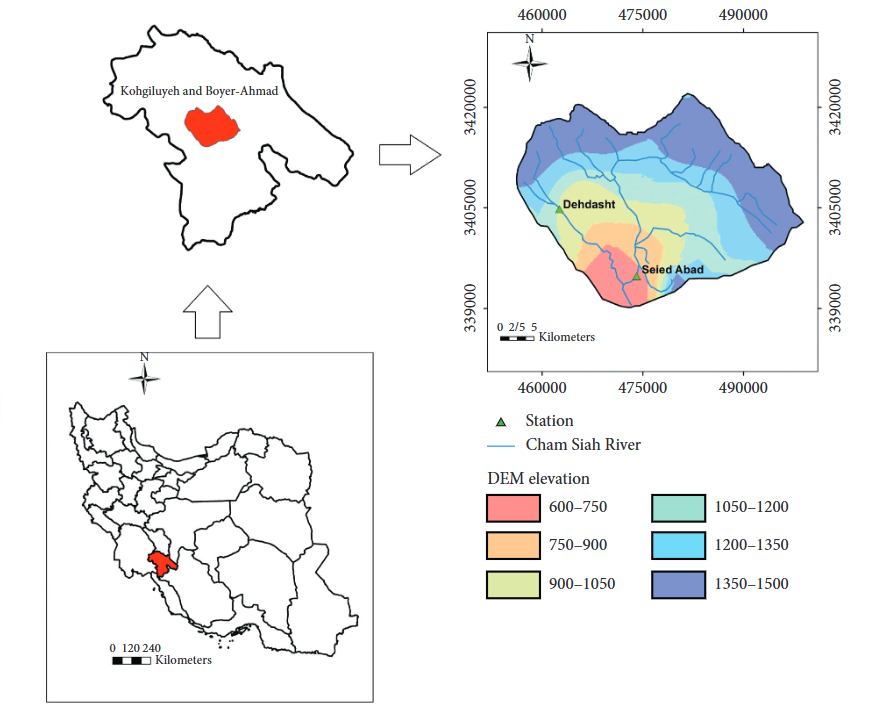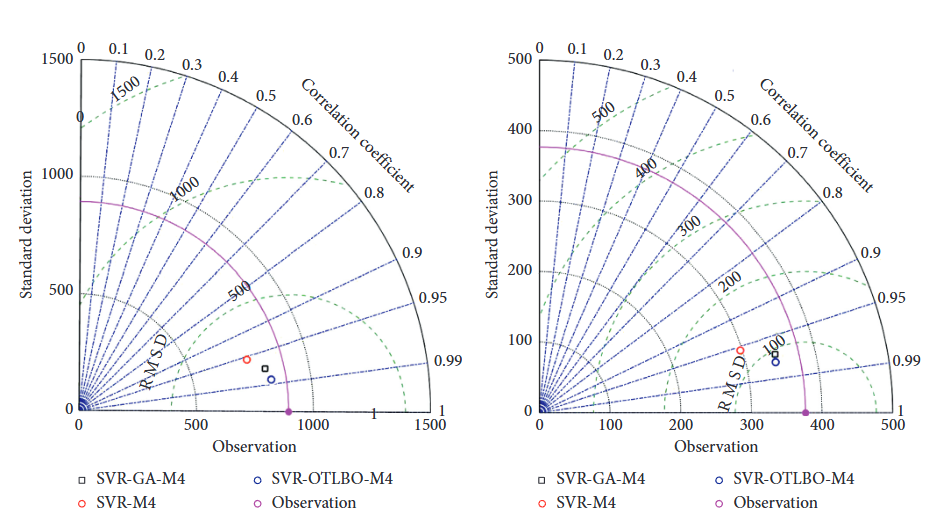Predicting Suspended Sediment Load (SSL) is essential for effective water resource management, influencing infrastructure design, flood control, and the health of river ecosystems. There are three primary traditional methods used for estimating sediment transport dynamics, collectively known as SSL: Physical Models, Numerical Models, and Empirical Models. Physical Models rely on equations that describe sediment transport and hydrological data, yet they are resource-intensive and require multiple assumptions. Numerical Models solve sediment transport equations using numerical methods, but they also demand considerable computational power and considerable expertise. Conversely, Empirical Models apply regression techniques to identify relationships between river discharge and sediment load, often failing to adequately represent the complex nature of sediment transport dynamics. Due to these shortcomings, researchers are increasingly exploring data-driven AI models to improve the precision of SSL predictions. Traditional techniques for estimating SSL are constrained by their dependence on intricate equations and extensive data needs.
Recent advancements in artificial intelligence (AI) have established hybrid machine learning models as effective tools for enhancing suspended sediment load (SSL) predictions. These data-driven models replicate real-world systems and encompass regression-based models, time series models, and AI models. Regression models evaluate the relationships between dependent and independent variables, with research demonstrating their successful application in hydrological parameters. Previous studies indicate that fuzzy logic models have excelled in predicting SSL, while multilayer perceptron (MLP) methods have delivered the most accurate predictions. Time series models such as autoregressive (AR), autoregressive moving average (ARMA), autoregressive integrated moving average (ARIMA), and autoregressive moving average with exogenous (ARMAX) analyze sequential data but have limitations in addressing nonlinear hydrological issues. AI models are swift, cost-effective, and suitable for predictive tasks. Research shows that the artificial neural network (ANN) using the Levenberg-Marquardt (LM) algorithm outperformed several other algorithms. With advancements in algorithms, researchers have begun incorporating hybrid models like ARMAX-ANN and ANN-GA for SSL prediction, yielding results that surpass those of standalone algorithms.
Furthermore, support vector machine (SVM) methods, particularly support vector regression (SVR), are increasingly employed in hydrological studies for SSL predictions due to their simple structure and capability to manage small sample sizes, nonlinearity, and high dimensionality. However, SVR presents challenges related to unknown parameters that can influence prediction accuracy, highlighting the need for optimization algorithms.
A study by Siyamak Doroudi and his team from the Civil Engineering Department at the Science and Research Branch of Islamic Azad University in Tehran, Iran, seeks to improve the performance of Support Vector Regression (SVR) by integrating it with an Observer-Teacher-Learner-Based Optimization (OTLBO) algorithm. Furthermore, a model that combines genetic algorithms with SVR, known as SVR-GA, has been developed. Both models are utilized to assess sediment loads in the Cham Siah River catchment in Iran. This catchment, located in Kohgiluyeh and Boyer-Ahmad Province, spans an area of 793 km². It experiences an average annual rainfall of 623.5 mm and a river discharge rate of 8.02 m³/s, with elevations ranging from 600 to 1500 meters and an average slope of 26.9%. The annual volume of sediment remains unspecified. For the prediction modeling, hydrological data spanning from 1986 to 2015—including discharge, rainfall, and sediment loads—were analyzed. Daily rainfall measurements were taken from two rain gauges located at Saeed Abad, which is at 690 m, and Dehdasht, at 840 m. River discharge and sediment data were collected from the Saeed Abad station, situated at 663 m. This blog delves into their methodology and results, highlighting the role of AI in enhancing sediment load estimation.
SSL prediction is vital for various environmental and infrastructure applications. For example, it helps in managing floods, as excessive sediment can block drainage systems, increasing flooding risk. Monitoring water quality is also crucial since high sediment levels can harm water clarity and aquatic ecosystems. Infrastructure protection is another important concern; too much sedimentation can severely shorten the lifespan of dams and reservoirs. Moreover, accurate SSL prediction is essential for effective erosion control, assisting in the development of methods to prevent soil erosion. Given these issues, improving prediction accuracy is critical for enhanced planning and resource management.
The study presents an innovative hybrid model leveraging AI, which combines Support Vector Regression (SVR) with the Observer-Teacher-Learner-Based Optimization (OTLBO) algorithm. SVR is a machine learning technique that maps input features into a high-dimensional space, effectively solving nonlinear problems by identifying the best regression solutions. However, it necessitates precise parameter tuning for optimal performance. Conversely, the OTLBO algorithm operates as a heuristic optimization strategy, inspired by classroom dynamics where the interactions between a teacher, observer, and learners foster better educational outcomes. By utilizing this hybrid model, the OTLBO algorithm optimizes SVR parameters, ensuring the model is effectively trained, ultimately enhancing predictive accuracy.
The study relies on three key factors: daily rainfall data, river discharge data, and observed SSL values. Before analysis, the dataset was split into 68% for training and 32% for testing. The main input variables, especially examining the correlation between SSL on the initial day and input variables like river discharge and rainfall depth from several earlier days, can be analyzed using various feature selection techniques such as Pearson correlation, autocorrelation function (ACF), partial autocorrelation function (PACF), and cross-correlation function (CCF). Pearson correlation is recognized as a straightforward and effective method for identifying significant input variables. Five input combinations (M1 to M5) were utilized to build the models.
The study conducts a thorough examination of the predictive performance of several modelling approaches, specifically Support Vector Regression (SVR), an SVR integrated with an Optimization Algorithm (SVR-OTLBO), and a hybrid Genetic Algorithm – SVR (SVR-GA). Noteworthy findings have emerged from this analysis. Among the SVR variants, the SVR-M4 model demonstrated the most impressive performance, achieving a Relative Root Mean Square Error (RRMSE) of 1.08, a correlation coefficient (R) of 0.95, and a Willmott Index (WI) of 0.97.
For the SVR-OTLBO models, the SVR-OTLBO-M4 emerged as the top performer, recording the lowest RRMSE of 0.537, alongside the highest Willmott Index of 0.9812 and a Relative Prediction Inaccuracy Quotient (RPIQ) of 0.9201. Additionally, the SVR-GA-M4 yielded the lowest RRMSE at 0.562, while the highest correlation coefficient (R) and Willmott Index (WI) were achieved by SVR-GA-M5 (0.97) and SVR-GA-M4 (0.979), respectively. The analysis identified the optimal input combination, denoted as M4, which includes variables Rs(t), Rd(t), Qs(t), and Rd(t−1), as most effective for predicting suspended sediment load (SSL).
Consequently, the models SVR-M4, SVR-OTLBO-M4, and SVR-GA-M4 are recommended for further investigation. The R² values were also considered to evaluate model performances. The results indicate that the proposed hybrid models generally exhibit superior performance compared to the traditional SVR model, with the SVR-OTLBO-M4 attaining the highest R² values of 0.958 during training and 0.953 during testing.
Furthermore, a Taylor diagram was utilized to assess multiple statistical criteria, including standard deviation, correlation coefficient, and RMSE, to identify the predictive model most closely aligned with benchmark data (observed SSL). The SVR-OTLBO-M4 model consistently outperformed both the SVR-M4 and SVR-GA models across both training and testing phases. While previous studies have utilized SSL with various lagged inputs for predictive purposes, this investigation emphasizes the effectiveness of hydrological variables, such as discharge and rainfall depth, in developing a robust predictive model. The proposed hybrid model effectively estimates suspended sediment load using rainfall and discharge data as input features.
Combining AI with sediment load prediction marks a significant advance in effective and dependable water resource management. The hybrid SVR-OTLBO model offers a groundbreaking method that outperforms conventional techniques while improving prediction accuracy. As machine learning continues to advance, its importance in tackling intricate environmental issues will grow. Utilizing AI-based models like SVR-OTLBO, researchers and engineers can formulate enhanced sediment management practices, promoting sustainable water resource planning going forward.
Reference
Doroudi, S., Sharafati, A., & Mohajeri, S. H. (2021). Estimation of Daily Suspended Sediment Load Using a Novel Hybrid Support Vector Regression Model Incorporated with Observer‐Teacher‐Learner‐Based Optimization Method. Complexity, 2021(1), 5540284.https://doi.org/10.1155/2021/5540284
Russell S. and Norvig P., Artificial Intelligence: A Modern Approach, 2016, 3rd edition, Pearson Education Limited, Upper Saddle River, NJ, USA.
Buyukyildiz M. and Kumcu S. Y., An estimation of the suspended sediment load using adaptive network based fuzzy inference system, support vector machine and artificial neural network models, Water Resources Management. (2017) 31, no. 4, 1343–1359, https://doi.org/10.1007/s11269-017-1581-1, 2-s2.0-85012191686.
Haghbin M., Sharafati A., Motta D., Al-Ansari N., and Noghani M. H. M., Applications of soft computing models for predicting sea surface temperature: a comprehensive review and assessment, Progress in Earth and Planetary Sciences. (2021) 8, no. 1, 1–19, https://doi.org/10.1186/s40645-020-00400-9.
Mustafa M. R., Rezaur R. B., Saiedi S., and Isa M. H., River suspended sediment prediction using various multilayer perceptron neural network training algorithms-a case study in Malaysia, Water Resources Management. (2012) 26, no. 7, 1879–1897, https://doi.org/10.1007/s11269-012-9992-5
He Z., Wen X., Liu H., and Du J., A comparative study of artificial neural network, adaptive neuro fuzzy inference system and support vector machine for forecasting river flow in the semiarid mountain region, Journal of Hydrology. (2014) 509, 379–386, https://doi.org/10.1016/j.jhydrol.2013.11.054



